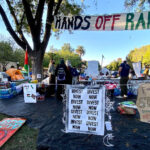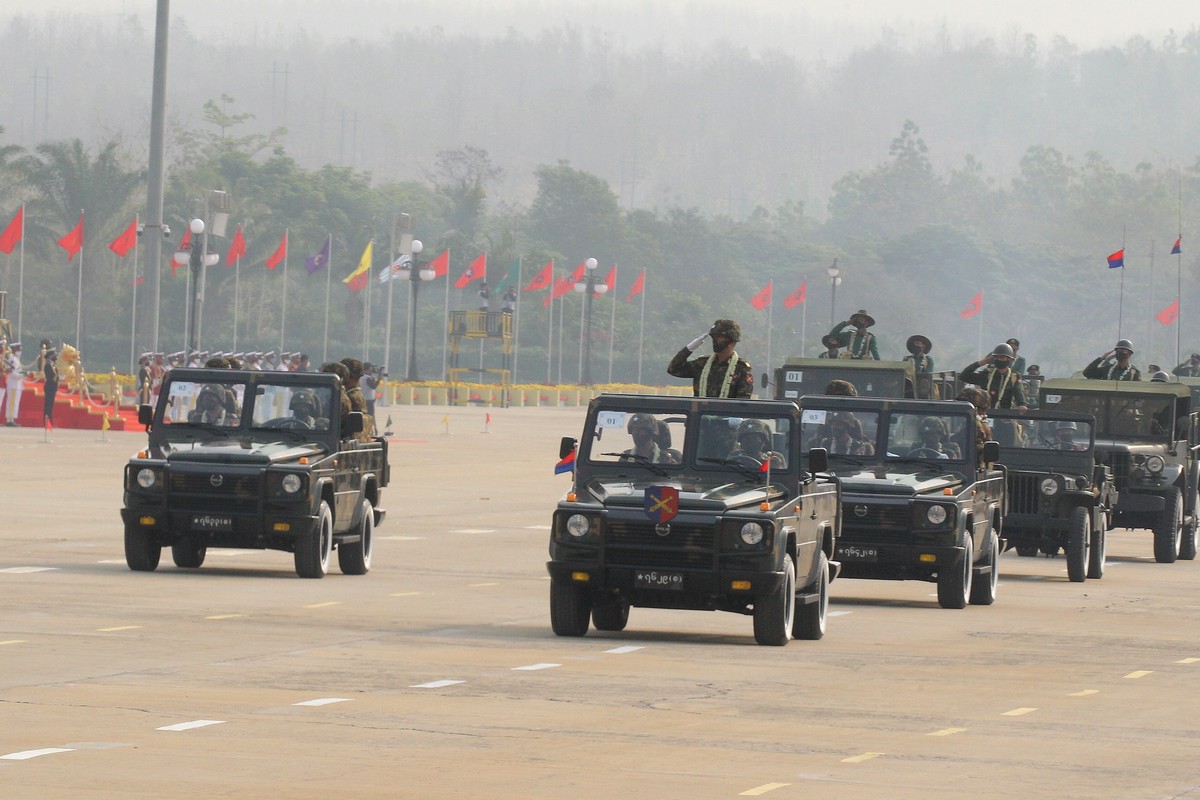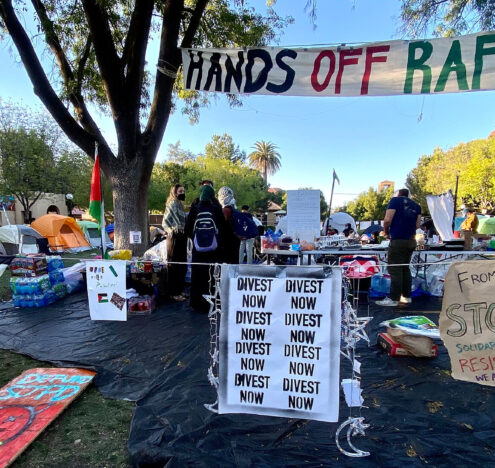Operation 1027 in Myanmar’s northern Shan State has advanced China’s quest to eradicate forced labor scam compounds on its border. However, it has also disrupted the lucrative China-Myanmar border trade and triggered a countrywide attack by resistance forces that has dealt the junta unprecedented battlefield losses. Beijing is concerned that its southwestern provinces will experience economic hardship with the loss of border trade, and that continuing hostilities may affect these provinces’ energy security. The Myanmar army’s desperate request for Chinese help to deal with the fallout from Operation 1027 has probably generated further concern in China that the military may be on the brink of defeat.
Beijing has dramatically scaled up efforts to consolidate the success in dealing with transnational crime, while attempting to tilt the trajectory of the conflict in a direction favorable to its interests. Although the immediate objective may be stabilizing the border to allow resumption of trade, China’s effort to do so by fragmenting the armed resistance and forcing a series of one-off cease-fires represents yet another disastrously misguided approach to peacemaking in Myanmar, ignoring lessons learned from decades of failed peace initiatives. Meanwhile, China’s efforts to leverage Operation 1027 into a crackdown on criminal activity in Myanmar reveals important lessons about what does and does not work in dealing with the Myanmar army.
For the United States, in response to the growing Chinese crackdown the criminal syndicates have simply moved elsewhere and continued to redirect the scams and human trafficking away from China. This warrants close attention, as it is likely to bring a dramatic escalation in scams targeting Americans and undermining human security across the rest of globe.
Twin Objectives
China spent over half of 2023 pleading with Myanmar’s junta chief, Gen. Min Aung Hlaing, and other members of his State Administrative Council (SAC) to crack down on cross-border scam operations that use trafficked Chinese nationals as forced labor. Having received no response by September, China began to look at other ways of tackling the problem, including arresting and detaining militia leaders and deploying Chinese police to some of the border areas hosting scam centers. A welcome new avenue emerged when the Myanmar National Democratic Alliance Army (MNDAA), an ethnic armed organization (EAO) based in northern Shan State’s Kokang region, and its two Three Brotherhood Alliance allies – the Ta’ang National Liberation Army and the Arakan Army – announced that Operation 1027 had two main objectives: (1) to eliminate the scam syndicates; and (2) to defeat the military dictatorship itself. Leveraging the MNDAA’s rapid success in recouping its former territory of Kokang, by early November the Chinese minister of public security had secured a pledge from Min Aung Hlaing to fully address the problem before the end of 2023.
The Three Brotherhood Alliance’s stunning success on the battlefield proceeded to send waves of fear through the Kokang territory, causing many compound owners and syndicate heads to shut down operations, relocate and empty out their compounds. Three weeks into the operation, over 7,000 people had managed to escape the criminal compounds and flee to China, while many more were delivered to the Thai border, where kingpins and scam syndicate leaders had become increasingly embedded.
On Nov. 12, the Chinese government issued an arrest warrant for Ming Xuechang, the Myanmar army border guard force (BGF) leader responsible for a massacre of Chinese nationals in Kokang perpetrated on Oct. 20, and three of his relatives involved in the operation of their scam compound. In an unprecedented move, the Myanmar army immediately deployed a large troop contingent to hunt down Ming Xuechang and, according to the MNDAA’s account, to execute him; his three relatives were handed over to Chinese authorities within four days. Chinese pressure had successfully compelled Min Aung Hlaing to begin dismantling the BGF that he had created himself when he led Myanmar army troops to capture Kokang in 2009, thus destroying his own legacy in Kokang.
Lashing Back or Crying for Help?
As Min Aung Hlaing finally agreed begrudgingly to a specific timeline to crack down on his criminal enterprises across the country, the dramatic developments in the border area served to reveal just how weak the Myanmar army had become when faced with the combined forces of the country’s ethnic armies and People’s Defense Forces. With troop morale at a new low, the Myanmar army resorted to a traditional defense mechanism – fomenting popular hatred – in this case, against China. In mid-November, the army organized a protest mob to march on the Chinese Embassy in Yangon, railing against Chinese support for the Three Brotherhood Alliance and accusing China of interfering in its internal affairs. Quite perversely, this only helped the MNDAA solidify its own support in China, deploying its propaganda machine quickly to display the Myanmar military’s growing anti-China sentiments on WeChat and redoubling its calls to eradicate the “military dictatorship.”
With troop morale at a new low, the Myanmar army resorted to a traditional defense mechanism – fomenting popular hatred – in this case, against China.
The junta quickly backtracked, shifting the blame for its battlefield failures on a range of other culprits, including the United States, Taiwan and even Timor-Leste. And it began pleading for Chinese help, inviting ultranationalist Chinese intellectuals to Myanmar for a “study tour” and going on its own offensive in the Chinese media, accusing the EAOs of being “drug lords” and using “criminal money” and Western influence to undermine Myanmar’s sovereignty.
While these moves were likely counterproductive for the SAC, they served to impress on China just how serious of a crisis the military faced as Operation 1027 spread across the country, delivering unprecedented losses to the military in almost every corner of the map. It became increasingly clear to China that Operation 1027 was actually about something much larger than eradicating scams, and it was likely to turn into something that China could not control. China responded quickly with twin military operations – a People’s Liberation Army live-fire exercise on the border in Yunnan and a naval visit to Yangon – designed to send a strong signal of Chinese security influence and determination to achieve stability in order to protect its strategic interests in country, and especially a border trade valued at nearly $4 billion per year.
Recalibration or Recalculation?
China has since responded favorably to the Myanmar army’s requests for help, placing pressure, albeit moderate, on the Three Brotherhood Alliance to initiate negotiations with the junta, but Chinese assistance comes at a high price. On Dec. 10, immediately following the departure of the junta’s foreign minister from China, Chinese police issued fresh arrest warrants for 10 additional Kokang BGF elites, representing not only the heads of scam syndicates responsible for trafficking, murder and fraud, but also the remaining leaders of the Myanmar army’s BGF controlling what little is left of the junta’s most important border zone with China – the Kokang territory. The targeted individuals include Bai Suocheng, a defector from the MNDAA, who partnered with Min Aung Hlaing in 2009 to depose the MNDAA and establish Myanmar army control over Kokang.
These warrants amount to a debasement of the Myanmar army because it cannot control Kokang without its BGF leaders. Delivering them to the Chinese side means surrendering Kokang to the MNDAA and its allies. Moreover, it is likely to undermine the military’s commitments to its other BGFs, in Karen State, Kachin State, and elsewhere – all of which maintain massive criminal empires critical to the Myanmar army to sustain its strategic positions on the Thai and Chinese borders.
Failing to act on the Chinese warrants may offer the Myanmar army a slight chance of maintaining some control over the Kokang territory, but would risk further provoking the Chinese side, now that it has made clear its intention to crush the scam syndicates on its border. Equally terrifying to the junta is the prospect that the MNDAA may capture the BGF leaders first and hand them over to the Chinese side before the junta can. This could dramatically strengthen China’s preference to work with the Three Brotherhood Alliance to achieve stability, demonstrating that the Three Brotherhood Alliance’s governance capacity is more reliable than that of the army.
China’s moves are a clear sign that it will exercise its leverage over the belligerent parties in the China-Myanmar border area to attempt to stabilize key trade routes between Yunnan and the Indian Ocean, and to push the fighting away from its border. On the one hand, it is using the arrest warrants to force the junta to quietly exit Kokang and hand the territory over to the MNDAA. Once installed in Kokang, the MNDAA will become highly dependent on China as it attempts to regain effective governance. This could seriously circumscribe the MNDAA’s ability to continue participating in hostilities elsewhere against the junta and could generate tensions between the MNDAA and allied EAOs.
Looking to the Future
China’s longer-term strategy is undoubtedly designed to fragment the anti-junta resistance by helping individual armed groups achieve victories over limited territories in the border area in exchange for abandoning ambitions to participate in coalitions aimed at regime change. Over the medium term, China may consider this as a lifeline for the Myanmar army to keep itself in power, as well as a means of assuring dependence on China for all parties to the conflict and ultimately maximizing Chinese influence in Myanmar.
However, a strategy of this kind is unlikely to be sustainable over the longer term because it is a recipe for even greater levels of instability across Myanmar. First, it fails to recognize that the Myanmar army has become completely illegitimate in the eyes of the Myanmar people. By pushing EAOs to sign deals with the Myanmar army, China risks provoking serious and sustained anti-China sentiment, which could imperil the security of Chinese strategic investments in Myanmar. Second, making EAOs partner with the Myanmar army would threaten their legitimacy with the public, causing them to lose the popular mandate essential to stable governance. In the end, such a strategy could prove self-defeating.
Meanwhile, there is an equally concerning trend with respect to the response of the criminal networks to China’s attempts to break them up on its border with Myanmar. Following the Kokang crackdown, hundreds of criminal syndicate leaders fled Kokang for Myanmar’s Karen State among other locations, where they have expanded yet a new set of criminal compounds known as the Taichang Park in partnership with one of the Myanmar army’s proxy EAOs, the Democratic Karen Benevolent Army, in a remote location 23 miles from Myawaddy. These new scam compounds, along with other compounds operating under the Myanmar army’s Karen BGF, are adapting their practices to focus on trafficking non-Chinese nationals and targeting the non-China market, especially the United States. As China’s crackdown has focused solely on its own interest in asserting control over scam syndicates and reducing harm to Chinese nationals, its bold unilateral actions produce significant negative externalities for other countries. In response, the United States must dramatically scale up its efforts to crack down on this malign activity and seek to engage China in a more wholistic approach to this plague of criminality, which will continue to project a serious threat to the rest of the world.
This article was originally published by the United States Institute of Peace.





















